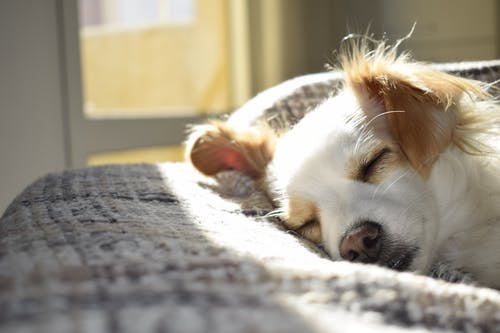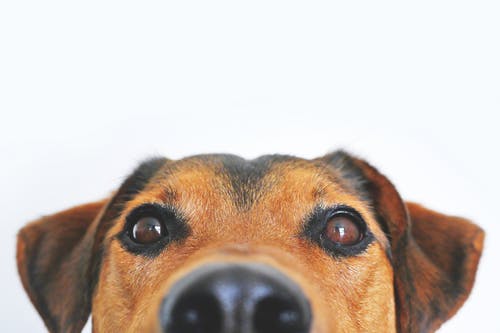Author: Crystal

Gingivitis, an inflammatory gum disease, is widespread in cats. Most cats over the age of three develop gingivitis and related dental problems due to dietary factors, illnesses, or physical anomalies. Due to oral malalignment, gingivitis is more common in short-nosed breeds, such as Persians. Gum inflammation can be extremely painful and, if left untreated, can result in tooth loss, bone infection, and germs entering the bloodstream through infected oral tissues. Systemic bacterial infection in a cat’s body can harm other organs. Both preventive and acute treatment strategies can help lower gingivitis risks while supporting your cat’s overall health.
How to diagnose gingivitis in cats?
Because cats are so good at disguising their pain, they may not show any discomfort, even in severe oral pain. Even cats eating normally and physically active might have substantial dental disease. Bringing your cat in for a regular yearly exam by visiting this link is critical for detecting dental disease, as a vet may often notice indicators of disorders while monitoring an animal.
How to treat gingivitis in cats?
The treatment for gingivitis relies on removing accumulated plaque and dental calculus and treating or extracting destabilized and/or damaged teeth. Routine teeth cleanings and dental X-rays should be performed under anesthesia to treat any inflammatory dental disease. When necessary, the teeth of cats who suffer from stomatitis are routinely extracted by a veterinarian. This helps to guarantee that the cats’ mouths remain pain-free through procedures like soft tissue suegery. .
The severity of periodontal disease in your cat will determine how frequently dental examinations need to be performed. If your cat’s teeth are crowded or if it still has baby teeth (also known as deciduous teeth), your veterinarian may recommend that you have them extracted. Your veterinarian will show you how to properly clean your cat’s teeth, and you should be sure to take him or her in for checkups regularly.
How to prevent gingivitis in cats?
Proper pet dental care by utilizing a toothbrush and toothpaste designed specifically for cats, which may be found at pet supply stores, is one way to protect against gingivitis. Brushing should be introduced gradually and regularly for cats to become accustomed to it.
Make your cat comfortable with toothbrushes and toothpaste.
Place nibbles beside the toothpaste and toothbrush on the counter so cats can associate them with something nice. You can even give them a dab of toothpaste to lick off your finger to get them used to it.
Make your cat comfortable with you touching their mouth.
Select a dental treatment your cat appreciates and apply it to their canine teeth. As they become acclimated to it, you should start positioning it further inside their mouth, on their teeth. By doing so, they will become accustomed to touching their mouth, making it much simpler for you to introduce the toothpaste.
Brushing
Now that your cat is used to having their mouth touched and being around the toothbrush and toothpaste, it should be much simpler for you to clean their teeth. They should brush along the gum line for fifteen to thirty seconds, focusing just on the outside teeth, and then they should be rewarded with a treat.
Conclusion
Make an appointment with your veterinarian if you suspect your cat has dental issues. Your veterinarian can inspect inside his or her mouth, which we all know may be difficult at home! If your cat cannot seal his/her mouth or has stopped eating, contact your veterinarian immediately.

It takes a lot of work to raise dogs. They are like being around a little child, one that will practically eat, pee on, and destroy anything in your home. Having a dog requires consistent attention, but the benefits are priceless. It will be simpler for you to help adjust to their new house if you plan for your new puppies. So, are you familiar with what needs to be done before bringing them home?
What to Prepare Before Bringing Home a New Puppy
Getting a new dog is one of the most positive things for a pet enthusiast. Whether you buy a pet from a breeder or an animal sanctuary, taking home a new “bundle of joy” is an enjoyable experience. However, you must make plans before taking your new puppies home. The following things are needed for new puppies to guarantee a smooth transition home.
1. Food
Your dogs’ food should be at the top of your needed list. Because of their relatively delicate gastrointestinal systems, dogs are quickly disrupted when their meal is quickly altered. Regardless of where you obtain your puppies, be careful to speak with the person feeding them and learn what they have been eating.
You should also take care of their oral health. Some foods can harm a dog’s teeth, creating significant concerns. It is essential to take them to a pet dentist to maintain the health of their teeth. In addition, vets specializing in animal dentistry in an excellent facility like Dana Park Veterinary Hospital can perform dental surgery on your dogs when required. But as other people have mentioned, prevention is preferable to cure.
2. Toys and Chews
Every pet requires playthings and healthy chewables. These are not just luxurious things for your dogs! Your puppies will start biting your furniture if you don’t provide them with chews and toys to play with. If you give your puppies their playthings and chew items, they will be much less likely to gnaw on inappropriate things like your footwear, furniture, and TV remotes.
Offer your dogs a variety of playthings and chews. It’s also a good idea to find out your pets’ health status before starting any physical exercise by taking them in for dog and cat wellness exams at the vet hospital. Furthermore, you should speak with a veterinarian about the most effective chew playthings based on your pet’s age. These can avoid damaging their teeth and periodontal.
3. Bed
Your puppies will need a bed similar to anyone else. It’s an excellent concept for puppies to have personal space, even if you allow them to sleep on your bed. Your dogs require a place where they can retreat from the outdoors. Your puppies need a calm area to sleep in when the home gets chaotic and they want to relax.
4. Leash and Collar
Even young dogs will require a chain and collar. There are several kinds of collars available. However, some are developed more for training than everyday usage. When the collar is adjusted correctly, two fingers must fit between it and the puppy’s neck. Otherwise, the collar is uncomfortably tight.
However, a too loose collar is risky because your puppies might escape it and flee when you’re strolling them. If their collar has flattened their hair, it is essential to take them to a grooming clinic for pet grooming services. They will feel comfortable doing this and making use of the chain. If you want to locate a grooming facility in your area, you can simply search “pet grooming near me” online.

What do we think of responsible pet ownership? While there is no best description, experts present a good starting point for the way we see pet ownership: “Owning a dog is more than just a privilege; it’s a responsibility.” Having a pet calls for a great deal of responsibility, whether you have a dog or a feline.
Pets are not disposable accessories that may be ignored. Pets are loyal companions who need regular focus, affection, and consideration. There are several lists available to be a responsible pet parent; however, we’ve compiled a list of the most essential tips we think all pet owners need to follow.
Tips for Responsible Pet Ownership
A new pet might bring a bunch of joy and happiness to your family, which is why lots of people decide to adopt one. Pets can give entertainment and enjoyment; however, they also come along with responsibilities that everyone must think about. Even if there isn’t a clear explanation of what constitutes a responsible pet owner, a few generally acknowledged guidelines can be used to give your pets a cheerful, healthy life.
Healthcare
Preventive care is essential to the long and healthy life of your pet. You need to establish a connection with a vet to help you stay on schedule with regular examinations and vaccinations. Your vet can also advise you on your pet’s grooming and hygiene needs and seasonal difficulties like fleas, ticks, and worms.
As your pet ages, consulting with a vet might be useful. As pets get older, their health will inevitably weaken. Make decisions about your pet’s end-of-life care with the support of your veterinarian. They can help you keep your pet delighted, pain-free, and adored.
Commitment
When you take in a new pet, you should be prepared to take care of him for the rest of his life. The routine care of pets is totally dependent on their human companions. You should consider how much time you devote to looking after a pet. Life usually gives us surprises; therefore, you should also think of who could be capable of caring for your pet if sudden things happen that stop you from doing so yourself.
Home and Food
There’s no need to discuss that your pet’s basic needs consist of food and water. Your pets will require regular access to clean water, healthy food, and shelter from the elements, probably within the home. If we treat our pets like family and let them stay in our homes with us, they will lead healthier, better, and better lives.
Spaying and Neutering
Animal overpopulation is a significant problem in the USA and around the world. Spaying or neutering your pets is a vital part of responsible pet ownership. There is no reason for any type of pet to reproduce until every homeless pet gets shelter. Also, learn about internal medicine vet here.
Enrichment and Exercise
Like people, our pets need frequent exercise. To preserve their muscles, hearts, and immune systems tough and healthy, they need to exercise often. Regular physical activity also keeps pets delighted by keeping their minds active. The psychological demands of our pets should also be considered. Pets crave their human companions’ attention. Among the most cruel things is to leave a dog chained to a tree in the backyard or a cat meowing loudly outdoors at an unattended door. Visit broadway4pets.com for more information about pet care.
Love
This may be the most important responsibility of all. We do not own our pets; they’re part of our family. They are our buddies who depend on us for their care. Families need to treat them like their own kids because they need our constant attention and care. Our pets understand us and want to make us pleased. Responsible pet owners give the same energy to their beloved pets.



